You have a product that you’re excited to begin selling on the internet. You’ve poured your heart and soul into this product and are passionate about getting it to as many people as possible. In fact, you’re so passionate that you’ve spent almost all your money developing it, leaving you almost no excess budget.
When you begin to search for ecommerce platforms to use when selling your product, you’re dismayed to discover that almost all of them cost a substantial amount of money. This is a major problem for you. Maybe you still need to spend money on marketing your product. Maybe you weren’t anticipating spending much on an ecommerce platform. All you know is that you don’t have enough to cover the costs.
So what are your options? You could…
- Borrow a pile of cash from a guy named “Tony” who will break your arm if you don’t repay him.
- Max out your credit card.
- Ask your parents for a loan.
- Try to cobble something together yourself.
Face it: these are all terrible options.
Thankfully, there’s another choice: free open source ecommerce platforms.
Open source simply means that anyone can download the platform for free and even develop their own add-ons to increase the functionality. Open source platforms can be incredibly powerful, with WordPress being the prime example.
In this post, we’ve listed the top 10 open source ecommerce platforms so you can choose the one that will work most effectively for you. We’re going to save you money which you can then use for other things in your ecommerce business.
You can thank us later.
PLATFORM #1: Magento Community Edition

Magento Enterprise Edition is used by mammoth companies like Nike and Samsung, and it will cost you an enormous amount: $16,000 per year. Yikes. Not quite what you had in mind for your budget.
Thankfully, they also have a community edition which is completely free, has loads of features, and used by thousands of customers.
Some of the best features include:
- It has the ability to manage multiple stores.
- It includes support for multiple languages.
- It has a host of additional plugins and extensions created by the community.
- It offers extreme scalability and flexibility.
There are a few downsides, however:
- Because so many people use this platform, it can take time to find all the answers you need.
- Magento doesn’t offer any technical support for the community edition, meaning you’ll need to sort out problems on your own or with the help of others.
- To maximize this platform, you need some technical ability. If that scares you, you may want someone to help you.
Find out how to Automate your Magento Order Fulfillment process with the Magento + Floship Integration here!
PLATFORM #2: osCommerce
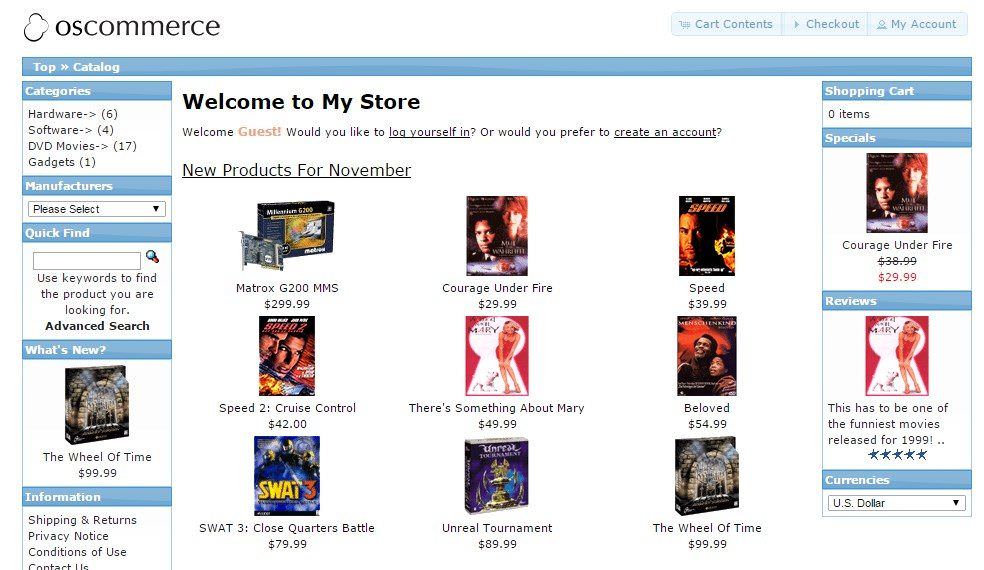
osCommerce is the perfect choice if you’re looking for something simple to get you off the ground. It is one of the “old reliable” options that has been around for a long time and yet still has a lot to offer. osCommerce is like the veteran on a football team. Maybe not quite as flashy as the others, but still a great option.
Some of the best features include:
- It’s relatively simple to use, meaning it’s relatively easy to get up and running.
- There are a variety of plugins available, allowing you to customize your ecommerce store.
- There’s a large support community.
Some downsides to consider:
- It’s older, meaning it doesn’t have as many options as the newer platforms.
- You’ll probably need help from a developer if you want to really customize your store.
PLATFORM #3: OpenCart
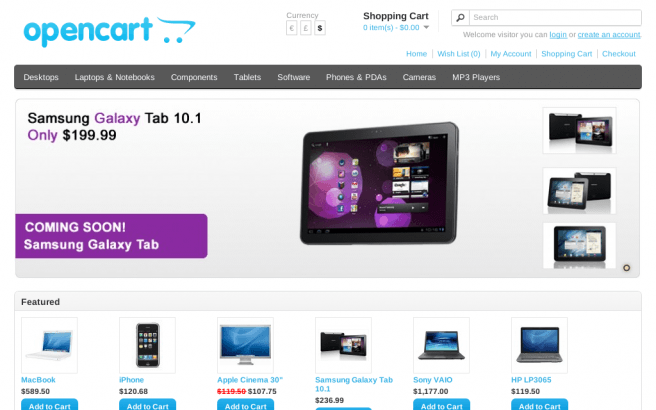
OpenCart is the perfect choice for a small business without any tech savvy employees. If you’re one of those people who gets cold sweats at the word “tech support”, this may be the solution for you. If you’re really looking for a simple solution that is easy to set up, this is it.
Some of the best features include:
- It’s really simple to get up and running.
- It doesn’t require much technical know-how.
- It’s easy on your server, meaning it will run quickly.
- There are numerous themes available, allowing you to customize your store.
- There are numerous plugins for added flexibility.
Some downsides to consider are:
- It relies heavily on plugins, which can create conflicts at times.
- You may need to enlist a developer to help you utilize some of the features.
- It’s older, meaning that it doesn’t have all the features some of the platforms do.
PLATFORM #4: Spree Commerce
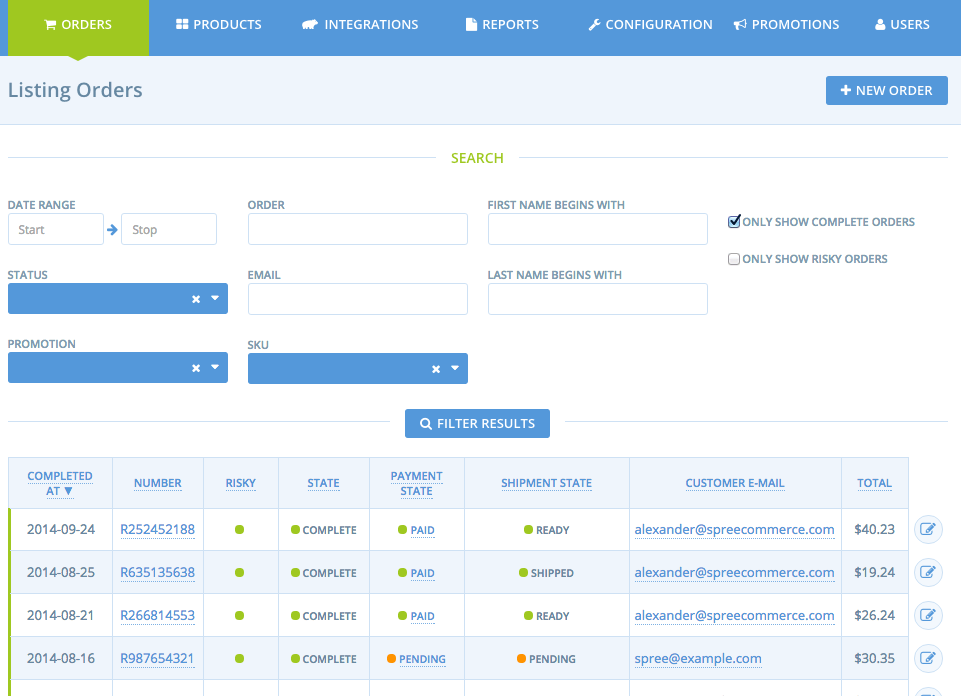
Used by Nutrisystem, 3D robotics, and Chipotle, Spree Commerce is a newer ecommerce platform built on Ruby on Rails. It’s one of the fastest growing open source ecommerce platforms, with many store owners wanting to take advantage of its features.
Some of the best features include:
- It utilizes a modular system, making it easy to learn, configure, and upgrade.
- It has numerous extensions, many of which are supported by Spree itself.
- It’s extremely flexible and scalable.
- It offers single page checkout.
- It has Google Analytics built in.
- It allows for custom tax logic.
Some downsides to consider:
- It has a limited supply of plugins compared to other platforms. If you need a new one, you’ll need to pay a developer.
- It has a smaller user base than the other platforms, meaning fewer resources developed by the community.
PLATFORM #5: PrestaShop
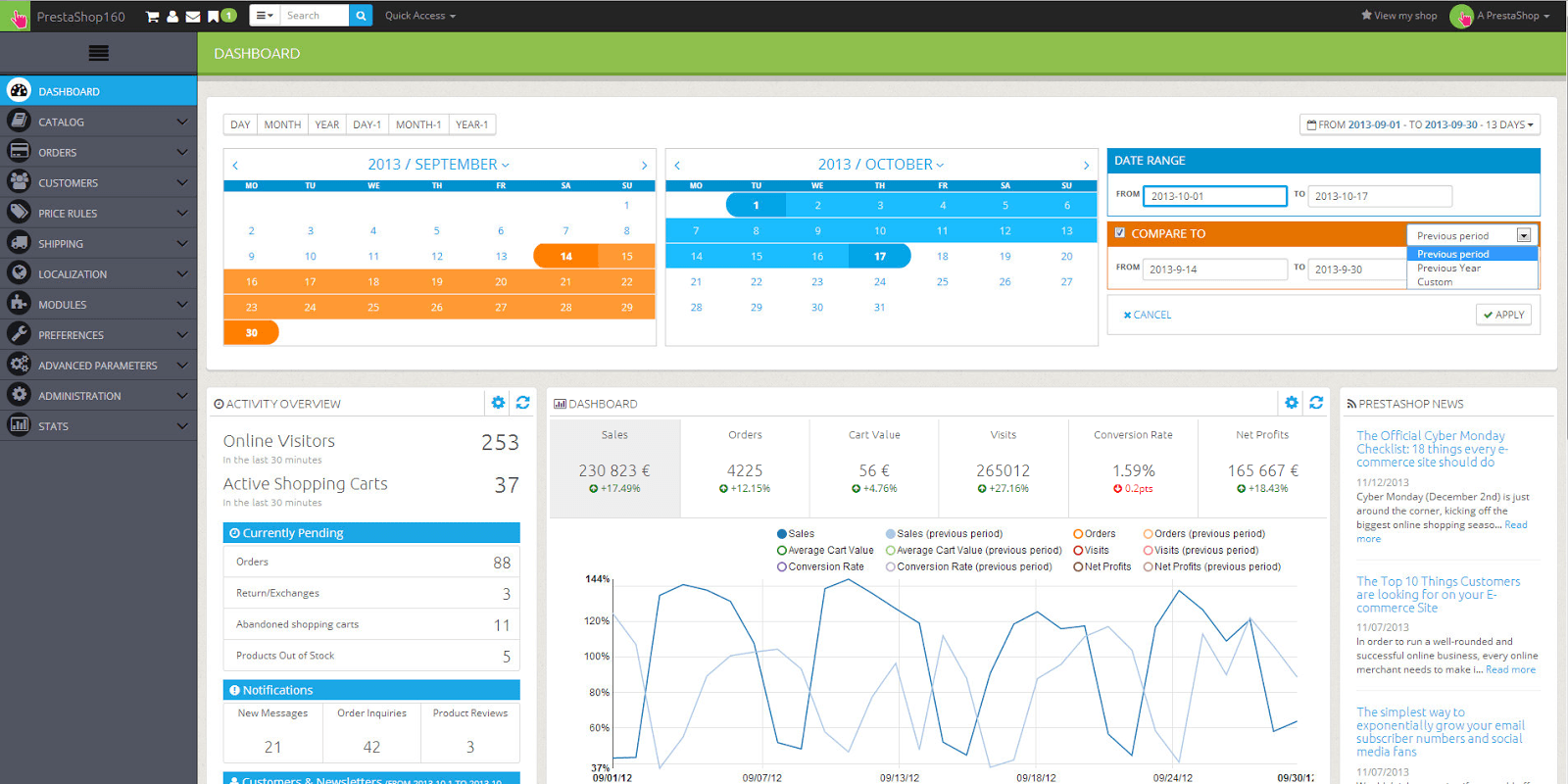
PrestaShop is a PHP-based platform based on the Smarty engine, and it comes with loads of integrated features. If that sounds like gibberish to you, don’t worry. It’s easy to download and install, allowing you to get your ecommerce store up and running quickly. It’s also widely used, allowing you to have confidence that it’s trusted by lots of people.
Some of the best features include:
- It has thousands of modules and templates to add on to the core functionality.
- It allows for cross-selling.
- It allows you to sell downloadable products (think digital books, music, etc.)
- It supports one page checkout.
- It supports shipping discounts.
- It offers full backend support to allow you to manage inventory, shipping, customers, etc.
Some downsides to consider:
- You can’t do a lot of customization with PrestaShop. If you want to customize every little feature, you may want to look elsewhere.
- You’ll need to either purchase add ons or hire a developer to do any custom work in your shop.
PLATFORM #6: Zen Cart

Zen Cart has been around for a long time and is used by a lot of people, boasting approximately 150,000 members in its support communities. It you need a system that’s perfect for product management, Zen Cart is a good choice.
Some of the best features include:
- There is a large support community.
- There are a significant number of add ons.
- There are numerous inventory options, such as specials and sales.
Some downsides to consider:
- It’s really plain and ugly out of the box, meaning you’ll need to take some time to customize it.
- If you add tons of products, it can slow down your ecommerce store.
PLATFORM #7: WooCommerce
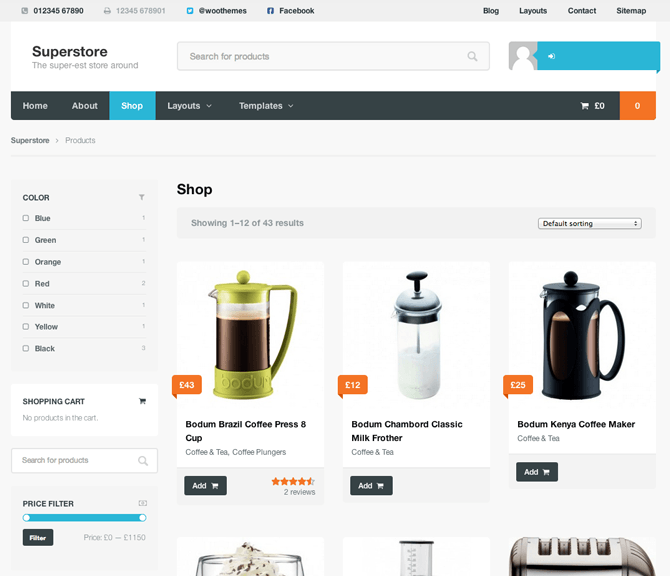
If you’re a fan of WordPress, WooCommerce is your ticket. It’s considered the leading open source platform for WordPress and it has a large base of enthusiastic users. If you’ve used WordPress before, you’ll find it really easy to install and get your shop running quickly. It’s used by Cupcake Studio and EcoKitty, so you know it offers some serious features.
Some of its best features include:
- It offers a large number of plugins and themes from WooThemes as well as third party sites.
- There is a large and active community forum for help when problems arise.
- There is seamless integration with WordPress.
- It’s very mobile friendly.
- It’s relatively easy to scale.
Some downsides to consider:
- It only works with WordPress, so if you want to use another platform, you’re out of luck.
- To get the most out of it, you probably need to utilize some of the paid extensions.
Find out how to Automate your WooCommerce Order Fulfillment process with the WooCommerce + Floship Integration here!
PLATFORM #8: JigoShop

Like WooCommerce, JigoShop is another WordPress-based ecommerce platform, and it’s been gaining some steam lately. If you need a solution that’s easy to setup, this one if perfect. Again, if you love WordPress, JigoShop might be the right option for you.
Some of its best features include:
- It’s simple to implement, allowing you to get your shop up and running quickly.
- It’s wordpress-based, allowing you to easily install it on existing WordPress sites.
- There are additional themes and plugins are available for purchase.
Some downsides to consider:
- You can’t create a single product with variations. Rather, you have to create a unique product for each variation, which can be very time consuming.
- To really tap into the power of this platform, you need to utilize the paid extensions, meaning it will end up costing you some money anyway.
PLATFORM #9: Drupal Commerce
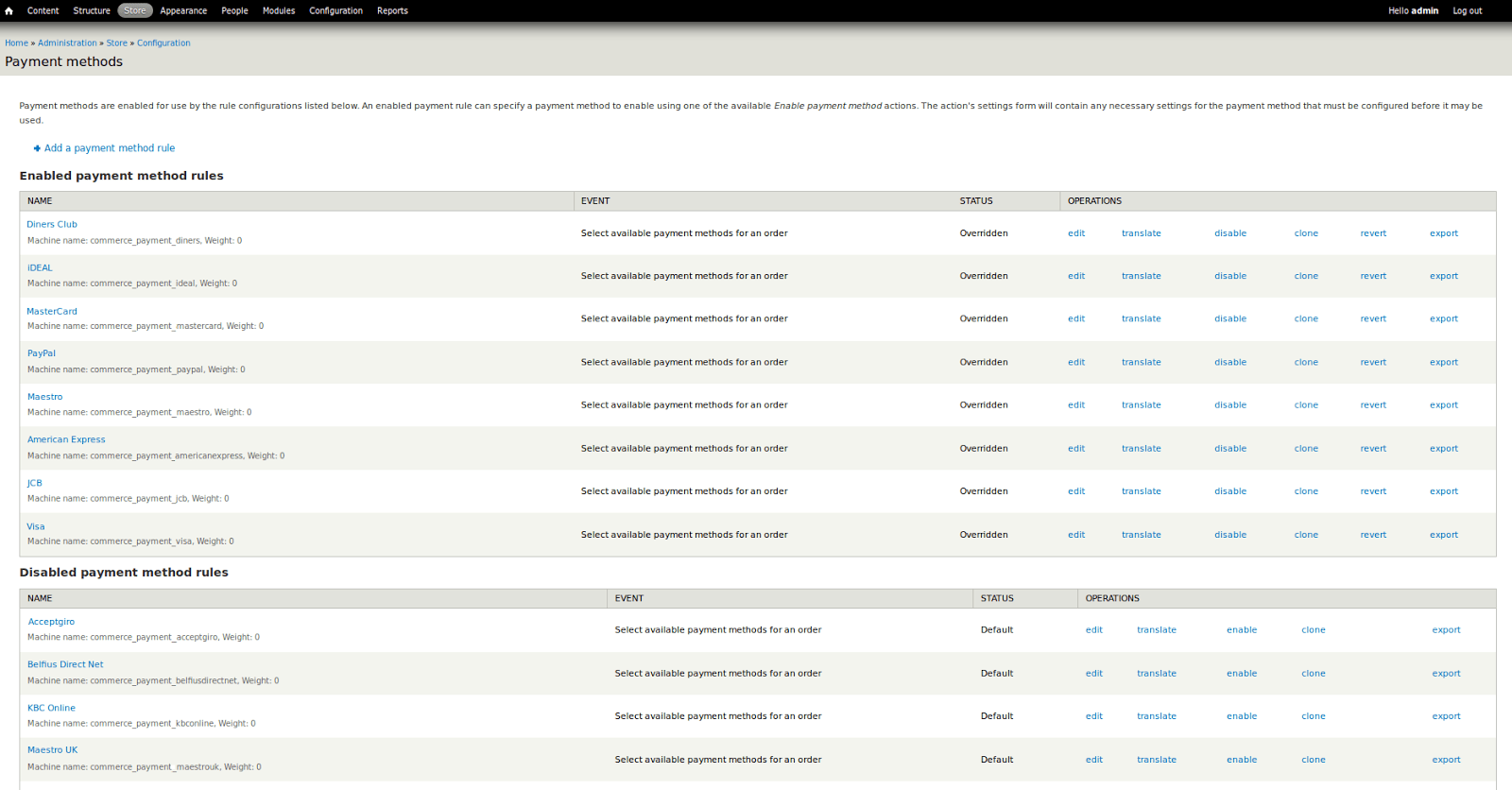
If you’re already a user of Drupal, it would make sense to utilize Drupal Commerce. It’s flexible, relatively easy to use, and offers a lot of flexibility and familiarity for Drupal users. You can also get a “Commerce Kickstart” package which provides you with the most popular add ons used in ecommerce.
Some of its best features include:
- It includes a complete product administration system, including shopping carts, multilingual and multicurrency support, and checkout forms.
- There is a robust list of third-party integrations for payment gateways, fulfillment services, accounting applications, social networks, etc.
- It’s easy use for those familiar with the Drupal ecosystem.
Some downsides to consider:
- Obviously, Drupal Commerce only works with Drupal. If you want to use something else, like WordPress, this isn’t the platform you’re looking for.
PLATFORM #10: VirtueMart

VirtueMart is based on Joomla, and it makes it really easy for Joomla users to get a storefront up and running. If you’re working with a global audience, it can be an especially good choice given its multi-language support. It’s been downloaded by millions of people, demonstrating that it’s a robust solution worth consider.
Some of it’s best features include:
- It offers support for multiple currencies languages.
- You can add unlimited products and categories.
- It’s easy for customers to create accounts, make purchases, access their order history, etc.
- It’s SEO friendly, which can increase the amount of organic traffic your store receives.
Some downsides to consider:
- It only works on the Joomla platform, and if you’re not familiar with Joomla there could be a learning curve.
- It doesn’t offer as many features as other platforms.
How To Choose Your Platform
Clearly, you have a multitude of choices when it comes to free, open source ecommerce platforms. So how do you choose the right one?
When deciding, ask yourself these 5 questions:
- Am I willing to pay for additional extensions?
- How much technical work am I willing to do?
- Do I want it to be specific to a platform like WordPress, Joomla, or Drupal?
- How many features do I want?
- Do I need a big support community?
By answering these questions, you can significantly narrow down your choices. Once you’ve done that, take a bit of time to do some research and read user reviews.
Finally, make your choice and get your store up and running! The sky’s the limit!
Related E-commerce Platform Articles
- Shopify Social Secrets – 5 Top-Rated Instagram Apps Every Shopify Store Should Be Using
- Choosing Between Magento and Shopify to Power Your Ecommerce Website
- 14 Ways to Get Your E-Commerce Customers to Make a Repeat Purchase

Ready To Upgrade Your Logistic Solution?
Speak to Floship ecommerce logistic consultant about improving your global support chain today




